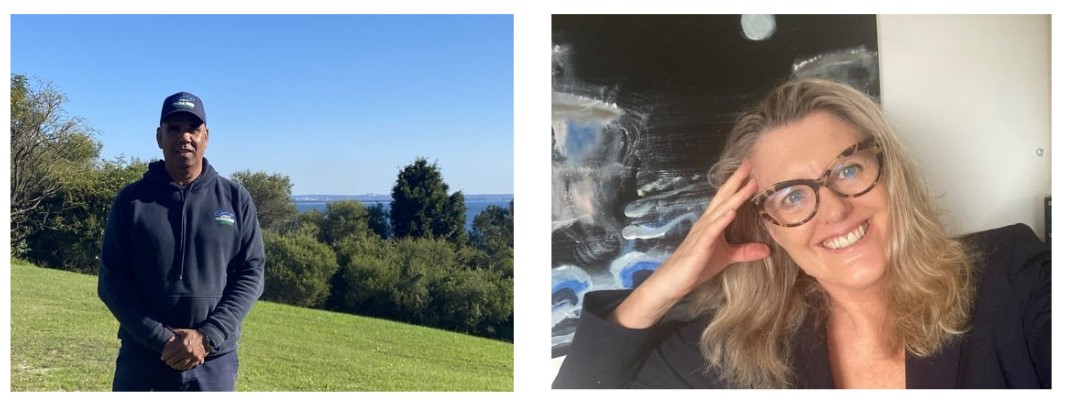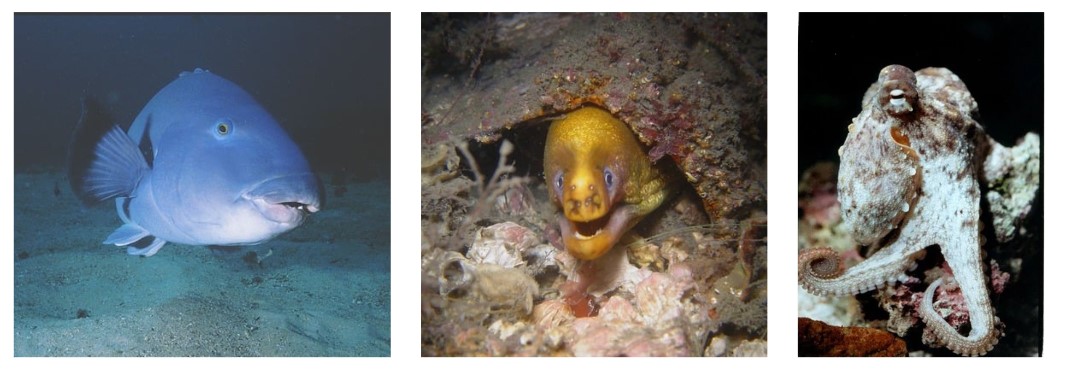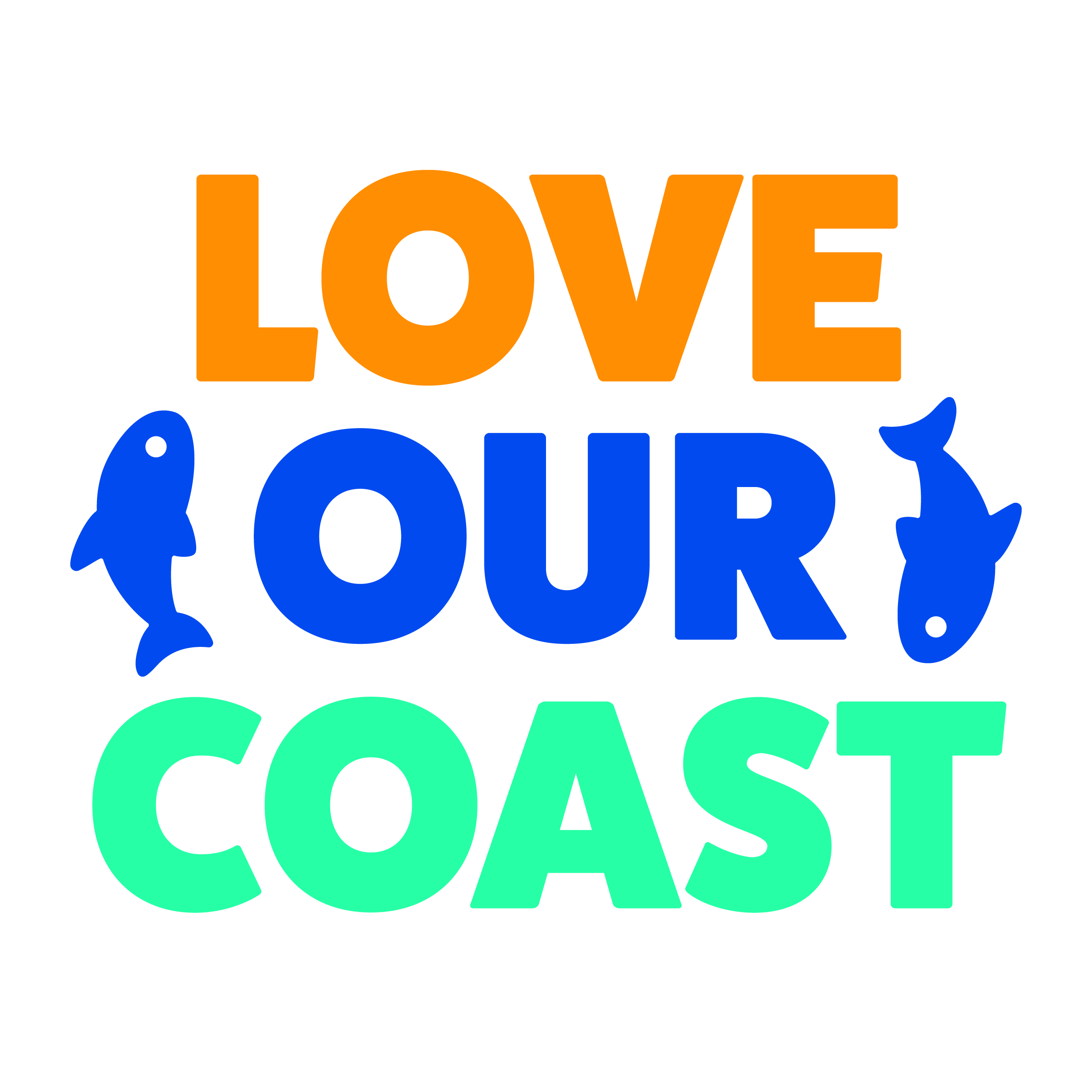This month, as the whales start their migration past our beaches, we are launching our ‘Love our Coast’ educational program to help the community better understand, protect, and celebrate our coastal and marine environment. Over the next 12 months, local activities and events will be delivered in collaboration with leading local community groups, scientists and coastal experts.
On the Blog this month, we talk with Senior Gamay Ranger Rob Cooley and well-known local Julie McAlpin from the Waverley Action Group (WAGi) about their love for the ocean and passion for protecting it.

Rob Cooley and Julie McAlpin
So Rob, tell us about the Gamay Rangers and what you do.
The Gamay Rangers are a group of indigenous rangers who care for Country in Gamay (Botany Bay), undertaking natural and cultural resource management to protect the marine environment. I became a Gamay ranger in 2019 after 33 years with NSW National Parks, to help safeguard the local environment and our culture. Our community is part of living history, and we have a lot of experience and knowledge to share!
Every day as a ranger is different. One moment, we can be patrolling the bay, counting seals, monitoring whales and water quality, and then suddenly, a rare False Killer Whale is spotted out at sea, and we must quickly respond. We also manage special cultural sites within the National Parks Estate and other conservation land, protecting them from the impacts of pollution, vandalism, and climate change.
 Credit: Gamay Rangers
Credit: Gamay Rangers
What changes have you seen in the ocean and what projects are you working on currently?
We have witnessed a significant increase in human activity that has put pressure on the marine environment. These changes have made it increasingly hard to find species of cultural significance and prevent our people from doing activities we used to enjoy. We want to bring back these species to protect the community and our way of life.
In the old days, the bay was dark with seagrass and teaming with life. We used to tell stories about swimming in the dark water and getting nipped by a Blue Swimmer Crab! So we are currently working on a seagrass restoration project, Operation Posidonia, which is recovering the local population of seagrass by providing species like blue swimmer crabs, flathead, bream, mullet, and Sydney white seals. Restoring these meadows will hopefully entice those culturally significant species back and rebuild our connection with them. We are also working with Operation Crayweed to restore kelp to areas affected by pollution and the overabundance of Sea Urchins. These habitats also support culturally significant species like Lobster and Abalone, which are under threat due to the declining habitat. Our project's aim is to improve the management systems currently in place, like sanctuaries and Aquatic Reserves, to ensure they protect the entire ecosystem.

Scuba diver planting seagrass (credit: Grumpy Turtle Creative) and seagrass meadows (credit: Operation Posidonia)
What can people do to help care for the marine environment?
We need to work together. Come have a yarn with us on a walk, join one of our talks, or say hello when we are out and about. By getting involved, you can learn more about our coast, the ocean and the Gamay Rangers' work.
Julie, what do you love about the ocean?
I have lived in Waverley all my life, with a few short stints overseas and interstate. My passion for all things related to the ocean—swimming, diving, snorkelling and fishing— always enticed me back to the coast! Exploring beautiful intertidal regions as a kid inspired me to study marine science. Living by the Waverley coast, I was then able to share the joy of the ocean and rockpool hopping with my kids.

Some local species: Blue Groper (credit: George Evatt), Clifton Gardens Eel, Squid (credit: George Evatt)
What are some of the significant changes you have noticed in regards to our local marine environment?
As a swimmer, I have noticed that the sea temperatures have increased, and the water stays warmer longer during the winter months. I am sure this has impacted what I see underwater. We used to frequently find seahorses in the harbour, but sadly, they are not so common anymore. Seaweed has disappeared or is less diverse, and interestingly, I have recently observed more tropical fish species, which thrive in warmer waters.
On a positive note, there is a greater awareness of marine conservation, and people generally respect the laws and protections in place.
 Julie swimming and a sea dragon (credit: George Evatt)
Julie swimming and a sea dragon (credit: George Evatt)
Who are the Waverley Action Group (WAGi), and how are you helping protect the marine environment?
WAGi was established in 2018 by a group of local residents largely to advocate on behalf of our community and to bring people together through exciting talks on our built and natural environments, culture and heritage.
We are currently collaborating with Council, the Sydney Institute of Marine Sciences, and the Gamay Rangers on a series of talks about cutting-edge practical research young scientists are doing to protect our local marine environment. It’s a great opportunity to hear from experts in their field, including traditional owners. We are excited to kick off our talks with ‘Past of Bondi and Sydney Harbour’ with Matt Pole, manager of Indigenous programs at the Australian National Maritime Museum.
We believe the talks are a way of leaving a legacy and ensuring that our natural world can be protected, respected and enjoyed for generations to come, so please join us!
 Waverley Council’s ‘Love our Coast’ program supports targets in Council’s Environmental Action Plan and aims to ensure our iconic coastline and underwater friends are safeguarded, restored and enjoyed for years to come. The program is being delivered in collaboration with the Waverley Action Group (WAGi). For more info on Love Our Coast events and activities throughout the year, visit the Second Nature Events page.
Waverley Council’s ‘Love our Coast’ program supports targets in Council’s Environmental Action Plan and aims to ensure our iconic coastline and underwater friends are safeguarded, restored and enjoyed for years to come. The program is being delivered in collaboration with the Waverley Action Group (WAGi). For more info on Love Our Coast events and activities throughout the year, visit the Second Nature Events page.

